Rio Tinto Alcan is a Canada-based mining company. Headquartered in Montreal, Quebec, it is a subsidiary of global mining conglomerate Rio Tinto. It was created on 15 November 2007 as the result of the merger between Rio Tinto's Canadian subsidiary and Canadian company Alcan.
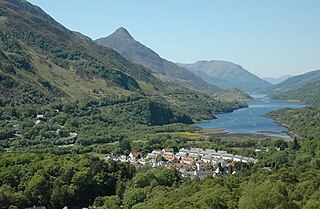
Kinlochleven is a coastal village located in Lochaber, in the Scottish Highlands and lies at the eastern end of Loch Leven. To the north lie the Mamores ridge; to the south lie the mountains flanking Glen Coe.
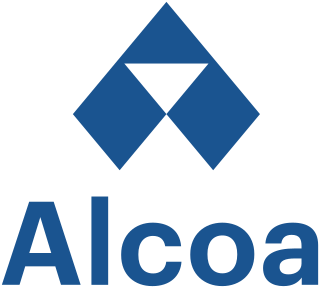
Alcoa Corporation is an American industrial corporation. It is the world's eighth-largest producer of aluminum. Alcoa conducts operations in 10 countries. Alcoa is a major producer of primary aluminum, fabricated aluminum, and alumina combined, through its active and growing participation in all major aspects of the industry: technology, mining, refining, smelting, fabricating, and recycling.
Alumina Limited is an Australian holding company. Spun off from Western Mining Corporation in 2002, its sole asset is a 40% shareholding in Alcoa World Alumina & Chemicals. In 2024, Alcoa acquired Alumina for US$2.2 billion.
Rio Tinto Aluminium is now known as Rio Tinto Alcan after Rio's takeover of Alcan. It was the world's eighth largest aluminium company. It mines and manufactures bauxite, alumina and primary aluminium.
Alcoa World Alumina and Chemicals is a owned 100% by Alcoa Corp. and is abbreviated to AWAC. AWAC's business is the mining of bauxite, the extraction of alumina and the smelting of aluminium. It has about 25% of the global alumina market. Alcoa acts as the day-to-day manager.
Kaiser Aluminum Corporation is an American aluminum producer. It is a spinoff from Kaiser Aluminum and Chemicals Corporation, which came to be when common stock was offered in Permanente Metals Corporation and Permanente Metals Corporation's name was changed to Kaiser Aluminum and Chemicals Corporation.

Dolgarrog is a village and community in Conwy County Borough, in Wales, situated between Llanrwst and Conwy, very close to the Conwy River. The village is well known for its industrial history since the 18th century and the Eigiau dam disaster, which occurred in 1925. The population was 414 at the 2001 Census, increasing to 446 at the 2011 Census. The community extends up to, and includes part of, Llyn Cowlyd in the Carneddau.
Articles related to Guinea include:
Aluminium in Africa originates from bauxite, and within Africa is primarily found in Guinea, Mozambique and Ghana. Guinea is by far the biggest producer in Africa, and is a world leader in bauxite production.

United Company Rusal is the world's second largest aluminium company by primary production output. It was the largest until overtaken by China Hongqiao Group in 2015. Rusal accounts for almost 9% of the world's primary aluminium output and 9% of the world's alumina production. Rusal was founded by major Russian industrialist Oleg Deripaska.

Charles H Roe was a Yorkshire coachbuilding company. It was for most of its life based at Crossgates Carriage Works, in Leeds.

Volta Aluminum Company, known as VALCO, is an aluminium company based in Tema, Greater Accra Region founded by Kaiser Aluminum and now wholly owned by the government of Ghana.
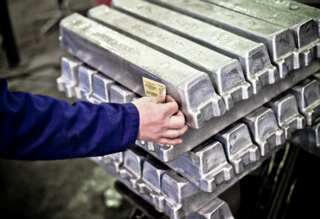
Aluminij was a Bosnian aluminium manufacturing company with headquarters in Mostar, Bosnia and Herzegovina. It operated from 1975 until 2020, when it was leased to the Israeli M.T. Abraham Group and since then has been operating as its subsidiary Aluminij Industries.
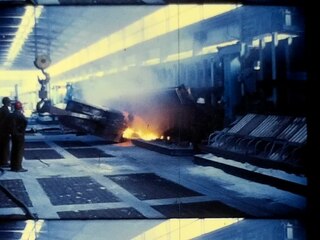
The Kurri Kurri aluminium smelter was located in Kurri Kurri, Australia and operated from 1969 until 2012. Developed by Alcan Australia Limited, the smelter experienced a change of ownership three times during its operations. Through gradual expansion, the smelter increased its production capacity from 30,000 tonnes per year (t/y) to 180,000 t/y of aluminium by the 1990s. The Kurri Kurri Smelter was engaged in operations in four areas; potlines for the melting of alumina, a cast house for casting of molten metal, a carbon plant for baking anodes, and anode plants for the manufacturing of carbon anodes.

Alcan was a Canadian mining company and aluminum manufacturer. It was founded in 1902 as the Northern Aluminum Company, renamed Aluminum Company of Canada in 1925, and Alcan Aluminum in 1966. It took the name Alcan Incorporated in 2001. During that time, it grew to become one of the world's largest aluminum manufacturers.

Denning Manufacturing is an Australian bus manufacturer in Acacia Ridge, Brisbane, Australia. In September 2019, it was acquired by Custom Bus, but its branding and operations will be retained.
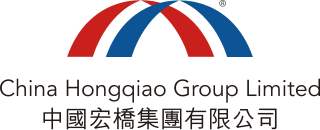
China Hongqiao Group Limited is a company founded in 1994 that specializes in the production of aluminium. Hongqiao is currently the second largest aluminium producer in the world after Chinalco. It is listed on the Hong Kong Stock Exchange with stock code 1378, and is incorporated in George Town, Cayman Islands.

Dolgarrog Power Station in Dolgarrog, Wales was originally built in 1907 as part of an aluminium smelting plant. It uses water turbines to drive electricity alternators. Public supplies began in 1922 when power lines were constructed to transmit electricity from the power station to Colwyn Bay, Conwy and Llandudno. The station was vested in the British Electricity Authority and its successors following nationalisation in 1948. It is currently (2021) operated by RWE NPower UK.












